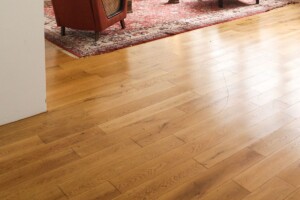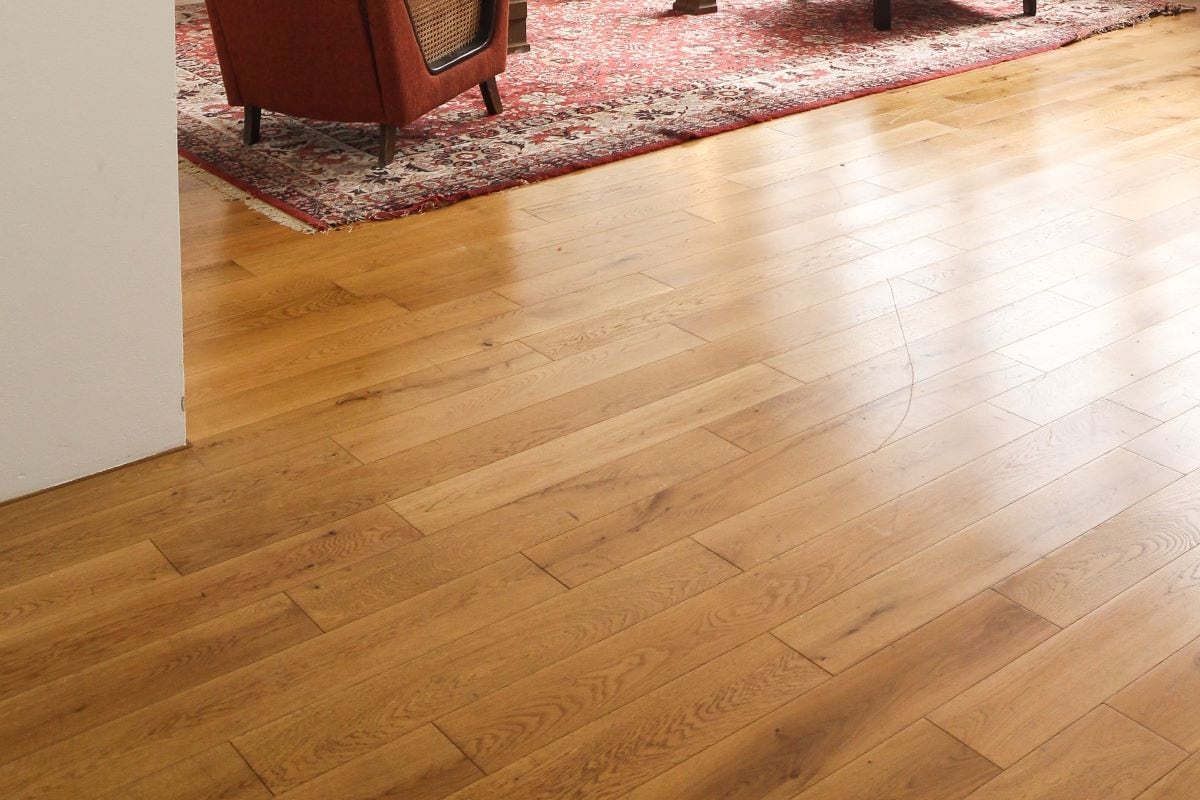
Hardwood floors can elevate the look of any home. However, it can be hard to ignore when those floors start to squeak with every step you take. While the sound certainly is annoying, could it be a sign of a structural problem in your home? In this Redfin article, we’ll explore the root causes of squeaky floors and whether you should be concerned about this issue. Whether you live in a Tacoma, WA, condo or recently bought a house in Sacramento, CA, find out what you can or should do when your wood floors start to creak.

What causes squeaky floors?
The primary cause of squeaky floors is the movement and friction between various components of the flooring system. This friction typically occurs between wooden floorboards, subflooring, or the nails and screws that secure them. Over time, wear and tear, humidity changes, and settling of the building can exacerbate these issues, leading to squeaks as the components rub against each other.
Are squeaky floors a structural problem?
Squeaky floors are typically not a direct indication of a structural problem in a home. Instead, they are usually the result of friction between different components of the floor, such as the subfloor, joists, or floorboards. The most common cause of squeaky floors is the natural movement and settling of the house over time, which can create gaps or looseness in the flooring system. Additionally, changes in humidity levels can cause the wood to expand or contract, exacerbating the issue.
“Squeaky floors are generally not a severe structural issue, but are more of an annoyance or nuisance,” says Jan Gonzalez of Orlando Flooring Gurus. “They are usually caused by friction between floorboards, subflooring, and joists. The creaking or squeaking sound occurs when these components rub against each other as pressure is applied to the floor.”
How do you fix squeaky floors?
To fix squeaky floors, there are several methods available. One common approach is to secure the loose floorboards or subfloor to the underlying joists using screws or nails. Another method involves applying a lubricant, like powdered graphite, between the boards to reduce friction. Alternatively, special braces or shims can be inserted to eliminate gaps and minimize movement. The choice of repair method depends on the specific cause of the squeak and the type of flooring in place.
Do squeaky floors need to be replaced?
Squeaky floors do not necessarily need to be replaced unless they are severely damaged or the underlying structural integrity of the floor is compromised. In most cases, addressing the squeaks through repair methods is sufficient to eliminate the noise and restore the floor’s functionality.
How much does it cost to fix squeaky floors?
The cost of fixing squeaky floors can vary widely depending on the extent of the problem and the chosen repair method. Simple DIY solutions like lubricants or shims can cost just a few dollars, while more extensive repairs, like securing loose subflooring, may require professional assistance and cost more. On average, homeowners can expect to spend anywhere from $50 to $500 or more for squeaky floor repairs.
Can you fix squeaky floors yourself?
Certainly, you can fix squeaky floors yourself. Identify the squeaky spots, and then apply talcum powder or powdered graphite for lubrication. If that doesn’t work, use screws to secure the floorboards to the joists, or consider using a squeaky floor repair kit. If you’re not confident in your DIY skills, it’s wise to hire a professional to avoid potential complications.
“Squeaks are common in many wood and carpeted floors, but they don’t necessarily mean a floor needs to be entirely replaced,” says Caleb Unruh of Floor Fixes. “Movement causes squeaks, so to fix the squeak, you have to find what part of your floor is moving when it’s walked on. There are several easy DIY ways to stop movement on a squeaky floor from above or below if you can access a basement or crawlspace and enjoy a quieter floor.”
“The average homeowner could fix floor squeaks themselves,” adds Nick Elg of Flooring Butler. “But hiring a professional can help you handle the squeaks without causing damage to your floor.”
Squeaky floors: the bottom line
Although squeaky floors aren’t necessarily a structural problem, they are something that most homeowners could probably live without. Whether you choose to take the DIY route or simply leave it to the professionals, your creaky floorboards can be a thing of the past.
The post Are Squeaky Floors a Structural Problem? Your Ultimate Guide to Squeaky Floor Solutions appeared first on Redfin | Real Estate Tips for Home Buying, Selling & More.
from Redfin | Real Estate Tips for Home Buying, Selling & More https://ift.tt/nvkTx82


No comments:
Post a Comment